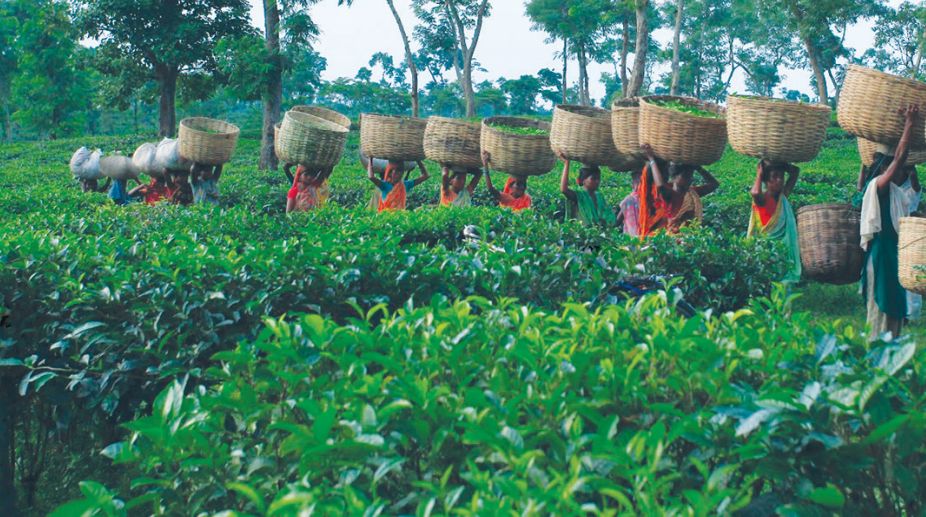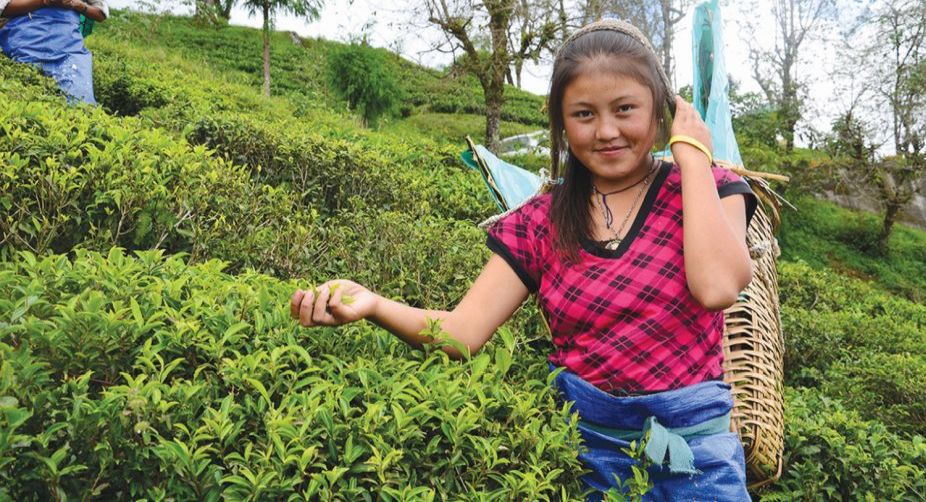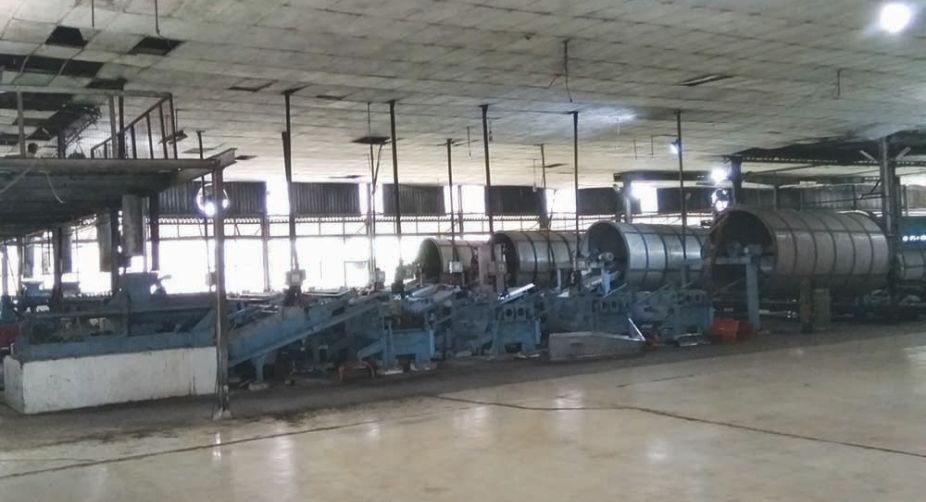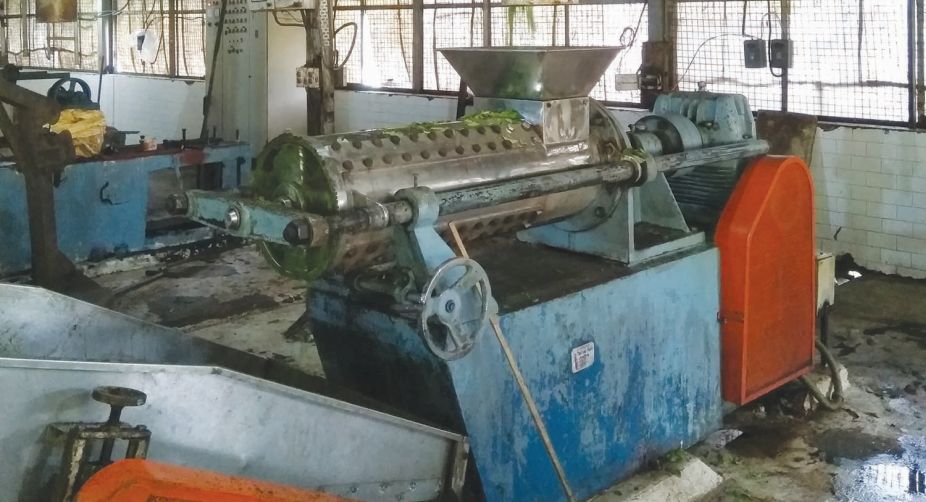Tea Board notifies dates for leaf harvest and preparation
Even though winter is still far away, the Tea Board of India has already revealed the official dates for harvesting and preparing tea in 2024.
The fate of Tripura tea industry hangs in balance as garden owners are keen to offset their losses and improve profit margins through rubber production. Dipankar Chakraborty visits a tea estate to examine what the right blend could be.

More than 70 years after the British East India Company set up the first tea garden at Chabua in Assam’s Dibrugarh district, the royal administration in the princely state of Tripura went about establishing its first tea garden at Hirachhera at Unakoti District in 1916, without any external help.
The ruling king of Tripura, Maharaja Birendra Kishore Manikya (1909-1923), took a policy decision to keep European tea planters out of the bidding process for the vast tract of wasteland that he wanted to lease out to set up tea estates spread across the state.
The decision to keep the European tea garden planters out of Tripura has had both positive and negative impacts on the state’s tea industry. With this move the Maharaja sought to ensure that revenue from the tea estates would directly go to the state’s coffers.
Advertisement
However, as later scientific studies would prove, in setting up tea gardens no scientific methods of plantation were followed in Tripura. Often the alignment of the garden was not proper. No soil study was carried out.
It was also found that unlike in Assam the agro-climatic condition was also not so suitable for growing tea. And to cap it all, the rampant labour shortage, high rate of local and central taxation, besides a long reign of insurgency, made the business of tea-making far from a lucrative one for a long time to come.

Today Tripura is the fifth largest tea-producing state of the country. With high input cost of tea production and reducing profit margins, many tea garden owners have come together seeking permission to produce rubber plants alongside tea to offset their losses.
Colonial times
Amid the colonial exploitation of India’s resources, including the tea trade, Tripura’s tea industry, despite suffering from numerous teething operational hiccups, was unique in nature. It was perhaps a brave attempt by a princely state that would merge with India after Independence, to set up a business owned and operated by locals.
The 22 of the total 33 projects sanctioned in Tripura during the World War I were owned by “super rich” Indian planters. Mahadev Chakravarti, writing in a study paper on “Tea and Tea Plantation Workers of Tripura in the Past and Present”, in 2012, pointed to various challenges the state’s tea industry, has been facing from the very outset.
After getting land on lease with a rent-free provision for first three years of the plantation, the immediate uphill task before the planters in Tripura was to clear the dense forest area to establish tea estates. The supply of labourers necessary for hoeing, weeding and pruning of bushes and a variety of other agricultural activities was far from adequate.
Adding to the planter’s woes was the unwillingness of both tribal and non-tribal labourers to work for the new tea planters. This apparent reluctance had to do with low wages and the peculiar nature of the industry and the poor working conditions.
Much to the relief of the tea plant owners, soon a workforce from places as far off as Bihar, Orissa, Madras, Madhya Pradesh and United Province came down to work for them, says Mahadev Chakravarty.
Evolution pangs
The Tripura tea industry was clearly going through a difficult phase of its evolution. The struggle for India’s Independence was at its peak as the British colonial forces employed local “coolies” ~ as the tea-garden workers were then described ~ in the tea estates owned by them in Assam and treated them as “slaves”.
A visiting British Trade Union delegation, led by Purcell and Hallsworth, in 1928 wrote about the conditions of tea plantation workers of Assam. “Virtually slave, plantation workers of Assam are perhaps the most wretched species of humanity that are to be found in the civilized world,” they wrote in their report.
Tripura tea gardens, however, were fairly insulated from the country-wide upheavals. But the working condition and wages of tea gardens labours were far from satisfactory as well.

The condition of the workforce continued to be pathetic even many years after Independence. The Statistical Department bulletins of Tripura government, in its report in 1961 pointed out that the daily wages of male workers were as low as Rs 1.25. This was perhaps the lowest in the Northeastern region, according to the report.
The financial condition of the tea gardens in Tripura, meanwhile, continued to be poor as productivity and quality of tea suffered due to conditions beyond anyone’s control. Dinesh Singh, manager of century-old Ranibari tea garden near Dharmanagar in Tripura, bordering the town of Karimganj in Assam, recounts how production of tea witnessed an upswing due to a sudden influx of tea garden workers from Assam in 1923-38.
Responding to Mahatma Gandhi’s non-cooperation movement in 1922, and mainly to protest the “inhuman” working conditions, over 8,000 tea garden workers of Assam left their respective gardens and marched on in two groups. As one group reached Karimganj Railway station, the British forces stopped from proceeding further.
Following an elaborate plan of labour welfare, wages and their settlement, the royal administration of Tripura, with the approval of then Bengal government, agreed to let the tea garden workers in Karimganj and Chandpur enter the state. This, for the time being, helped Tripura’s labour-starved tea gardens with their workforce problem.
The tea gardens of Tripura registered a total tea production of 2 lakh pounds in 1923. This further increased to 14 lakh pounds in 1925 and to 12 lakh pounds in 1930. According to experts, the recession in the 1930’s almost destroyed Tripura’s tea industry. By 1974 the total number of tea gardens came down from over 50 to 46 and to 39 in 1975, according to a Tripura government’s labour department report.
Problems galor
The Techno-Economic Survey of Tripura, 1961, attributed the poor state of affairs at Tripura’s tea gardens to factors such as lower than expected level of rainfall necessary for tea plantation, deforestation, absence of soil studies, lack of technical knowledge and experience, smaller size of gardens (151 to 300 acres) as against the standard norm of 500 plus acre gardens and unscientific layout plan. The yield of only 400 pound per acre was the lowest in the North-East.
India’s Partition further played havoc with the Tripura’s tea industry. Suddenly, the transport network necessary for supplying tea to various markets of the region was not available.

The railway lines running in East Bengal along Tripura border, which used to serve the tea gardens of the state, were cut off from the rest of the country. A long spell of insurgency also hit the state’s economy in later years.
Resurgence
With the coming into being of the Tripura Tea Development Board in 1980, many of the earlier problems being faced by tea gardens were sought to be addressed as the board went about improving the tea production and setting up new modern tea processing plants. Today there are about 52 tea gardens in the state.
The Ranibari Tea estate, where The Statesman correspondent spent a day with manager Dinesh Singh, is a tell-tale sign of the changing times for the tea garden. Set up more than 100 years ago, the garden is located along the Bangladesh border and a little over 50 kms away from the nearby Assam town of Karimganj, bordering Bangladesh.
Once a sleepy town, Karimganj is abuzz with the arrival and departure of local and interstate trains. There are daily local train services connecting Tripura’s bordering Dharmanagar and Capital Agartala to Karimganj, Silchar and the rest of the country. The local train runs to its full capacity daily.
Recently, a direct flight service to Silchar’s Kumbhir Gram airport from the National Capital was launched. The luxury Rajdhani Express train between New Delhi, Guwahati, Silchar, Karimganj, Dharmanagar and Agartala runs once a week. It passes by the newly-constructed New Karimganj station. There is a two-minute halt at the station. The railway lines, with improved infrastructure, have come as a boon to trade and commerce in both Assam and Tripura.
Daily routine
Dinesh Singh’s day starts early at 7.00 a.m as he goes about inspecting the tea garden spanning over an area of more than 700 acres. A family of tea garden managers, he came to Tripura only recently from another tea garden in Assam.
With the new company, with its headquarters in Kolkata, keen on taking advantage of the better times, it is a race against time for all at the production unit at Ranibari, located amid the verdant undulating landscape, a half an hour’s drive from the nearest railway station at Dharmanagar.
Singh acknowledges the onset of changed times and says it is his responsibility to manage the entire tea garden and ensure the production line is in order and supply chain works without any interruption. “We supply tea to a number of big brands in the country. The labour situation has improved as our factory is working to meet its various deadlines,” he said.

Singh, however, rues the absence of trained hands in plucking the right kind of tea leaves, which is essential for producing quality tea. Inside his chamber, at the tea processing plants, there are samples of CTC (Crush Tear Curl), or black tea, from other nearby tea gardens placed on his big table.
It is a 24×7 business. There are enough signs of competition among the local tea gardens. Samples of the tea are being sent to prospective buyers in Kolkata on a regular basis to explore new market base. The company has seen bad times and it is working full steam to take advantage of the changing times.
Modern trappings
Ranibari tea estate boasts of a modern tea processing and making plant. Plans are in the offing to further modernize the production set up but that may happen with increased productivity and earnings. There are at present 56 tea gardens in Tripura, according to latest state records. Of this three are owned by the state government, 11 by cooperatives and the rest, including Ranibari, are owned by private firms.
Tripura today has come a long way since it first ventured into tea production. There are already plans afoot by the tea garden owners to switch over to rubber production alongside the tea to improve the profit margins. But the state government is insisting on setting up coffee plantations instead, which according to reports, has already come a cropper.
With pressure mounting, it has to be seen if the state authority finally accedes to the demand for rubber plantation. With garden owners apparently keen on offsetting their losses and improving profit margins through rubber production, the fate of the tea production continues to hang in balance. It appears that it will perhaps be yet a long wait still before a large number of tea garden owners of Tripura find the right blend and turn a profit.
Advertisement